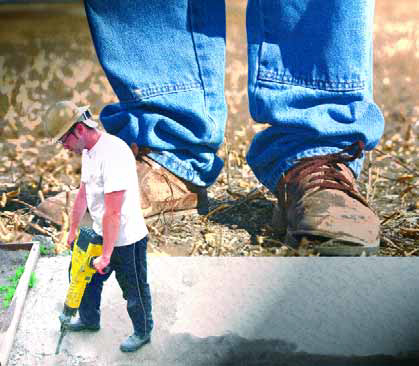ARTICLES
Advance Search
Aquatic Health
Aquatic Health, Fitness & Safety
Around the Internet
Aquatic Culture
Aquatic Technology
Artful Endeavors
Celebrity Corner
Life Aquatic
Must-See Watershapes
People with Cameras
Watershapes in the Headlines
Art/Architectural History
Book & Media Reviews
Commentaries, Interviews & Profiles
Concrete Science
Environment
Fountains
Geotechnical
Join the Dialogue
Landscape, Plants, Hardscape & Decks
Lighter Side
Ripples
Test Your Knowledge
The Aquatic Quiz
Other Waterfeatures (from birdbaths to lakes)
Outdoor Living, Fire Features, Amenities & Lighting
Plants
Ponds, Streams & Waterfalls
Pools & Spas
Professional Watershaping
Structures (Editor's Notes)
Travelogues & History
Water Chemistry
WaterShapes TV
WaterShapes World Blog
Web Links
Around the Internet
Aquatic Culture
Aquatic Technology
Artful Endeavors
Celebrity Corner
Life Aquatic
Must-See Watershapes
People with Cameras
Watershapes in the Headlines
For a long time now, I've been dismayed by what I see when certain of my fellow watershapers attempt to incorporate "natural" elements into their pool designs. The ubiquitous piles of rocks and the odd grottos slapped onto the ends of freeform pools are so common I can only conclude that too few of us know any better. This has led me to seek out design guidance that can teach us all how to do a better job of representing nature in our work - a quest that inevitably brought me to books on Japanese gardens. What I've found here is a tradition filled with concepts that transcends cultural boundaries and can easily be applied to projects in any number of styles or settings. It's all about the disciplined and detailed use of
For a long time now, I've been dismayed by what I see when certain of my fellow watershapers attempt to incorporate "natural" elements into their pool designs. The ubiquitous piles of rocks and the odd grottos slapped onto the ends of freeform pools are so common I can only conclude that too few of us know any better. This has led me to seek out design guidance that can teach us all how to do a better job of representing nature in our work - a quest that inevitably brought me to books on Japanese gardens. What I've found here is a tradition filled with concepts that transcends cultural boundaries and can easily be applied to projects in any number of styles or settings. It's all about the disciplined and detailed use of
Our discussions in the last two issues have been about excavation, which leaves us this time with a big, literal void that serves as a relatively exact dimensional representation of the vessel we're building. After we've installed the forms - a subject I've covered in great detail in a number of past columns - it's time for the installation of the plumbing and steel. Before we jump into that process, however, let me make a key point: Although I am a knowledgeable builder who has paid attention through the years and can work his way through lots of watershaping projects without assistance, I am not
Our discussions in the last two issues have been about excavation, which leaves us this time with a big, literal void that serves as a relatively exact dimensional representation of the vessel we're building. After we've installed the forms - a subject I've covered in great detail in a number of past columns - it's time for the installation of the plumbing and steel. Before we jump into that process, however, let me make a key point: Although I am a knowledgeable builder who has paid attention through the years and can work his way through lots of watershaping projects without assistance, I am not
In my first WaterShapes column last month, I made the point that small jobs can and should be pursued with every bit as much creativity and energy as large ones. No matter the size of the job, my task as designer and installer is to make all of my clients happy by sharing with them the value, joy and comfort of which watershapes and landscapes are capable. Indeed, making that happen is my charge from initiation of the design process right through any changes and adjustments and all the way up to the final washing of the driveway and topdressing of any damaged sections of lawn. On any scale or level, what I've noticed is that the smallest projects are quite often
In my first WaterShapes column last month, I made the point that small jobs can and should be pursued with every bit as much creativity and energy as large ones. No matter the size of the job, my task as designer and installer is to make all of my clients happy by sharing with them the value, joy and comfort of which watershapes and landscapes are capable. Indeed, making that happen is my charge from initiation of the design process right through any changes and adjustments and all the way up to the final washing of the driveway and topdressing of any damaged sections of lawn. On any scale or level, what I've noticed is that the smallest projects are quite often
We may be well into our ninth year of publication, but I'm still amazed and often amused by the ways that some people choose to describe WaterShapes. I've heard some armchair critics, for instance, dismiss us "a pool magazine that covers ponds," "a pond magazine that covers pools" or "a fountain magazine with
We may be well into our ninth year of publication, but I'm still amazed and often amused by the ways that some people choose to describe WaterShapes. I've heard some armchair critics, for instance, dismiss us "a pool magazine that covers ponds," "a pond magazine that covers pools" or "a fountain magazine with

















